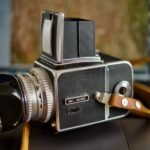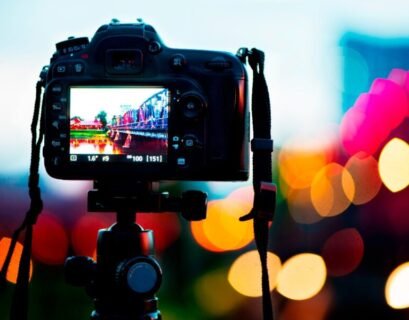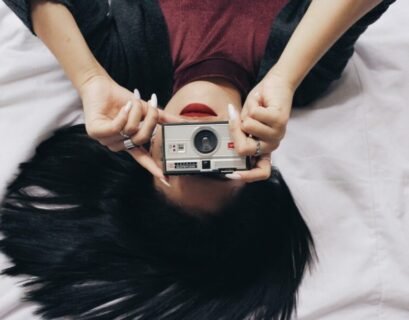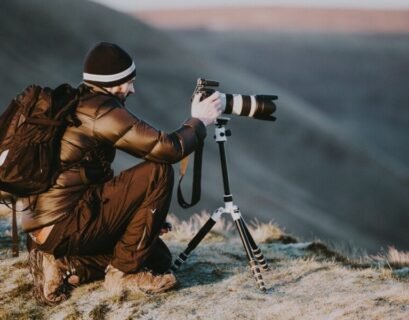Exposure is the foundation of photography. It determines how light or dark an image will appear and plays a crucial role in capturing the essence of a scene. Understanding the basics of exposure will not only improve your technical skills but also enhance your creative vision. This guide will walk you through the fundamental elements of exposure, how they interact, and how to master them to take better photos.
What is Exposure?
Exposure refers to the amount of light that reaches your camera’s sensor, creating an image. It is influenced by three primary settings: aperture, shutter speed, and ISO. These settings are often referred to as the “exposure triangle.” Mastering the exposure triangle is essential for achieving well-exposed photos.
The Exposure Triangle
Aperture
Aperture is the opening in the lens through which light enters the camera. It is measured in f-stops (e.g., f/1.8, f/2.8, f/16). A lower f-stop number indicates a larger aperture, allowing more light to reach the sensor, while a higher f-stop number means a smaller aperture, letting in less light.
Aperture also affects depth of field, which is the area of the image that appears sharp. A larger aperture (small f-stop number) results in a shallow depth of field, creating a blurred background that helps isolate the subject. This is ideal for portraits. Conversely, a smaller aperture (large f-stop number) increases the depth of field, keeping more of the scene in focus, which is perfect for landscapes.
Shutter Speed
Shutter speed is the length of time the camera’s sensor is exposed to light. It is measured in seconds or fractions of a second (e.g., 1/1000s, 1/30s, 30s). A fast shutter speed freezes motion, making it ideal for action photography. A slow shutter speed allows more light in, which is useful in low-light conditions but requires a steady hand or tripod to avoid blurriness.
Shutter speed also influences motion blur. Slow speeds can create artistic effects, such as the flowing water in a waterfall appearing silky smooth. Fast speeds are essential for capturing sharp images of fast-moving subjects like sports or wildlife.
ISO
ISO measures the sensitivity of your camera’s sensor to light. A lower ISO value (e.g., 100 or 200) means less sensitivity and is used in bright conditions to maintain image quality. A higher ISO value (e.g., 1600 or 3200) increases sensitivity, useful in low-light situations, but at the cost of introducing more noise or grain into the image.
Balancing ISO with aperture and shutter speed is crucial. While a high ISO can compensate for low light, it’s preferable to keep it as low as possible to maintain image quality.
Balancing the Exposure Triangle
Achieving the right exposure involves balancing aperture, shutter speed, and ISO. Changing one setting affects the others. For example, if you widen the aperture to let in more light, you may need to use a faster shutter speed or lower ISO to avoid overexposure.
Exposure Compensation
Most cameras have an exposure compensation feature, allowing you to adjust the exposure settings while in automatic or semi-automatic modes (such as Aperture Priority or Shutter Priority). This is useful when the camera’s meter might not be able to correctly gauge the lighting conditions, such as backlit scenes or high-contrast environments.
Understanding Light Metering
Cameras use light meters to measure the brightness of a scene and determine the appropriate exposure settings. There are different metering modes that can be selected depending on the lighting conditions and the subject:
- Evaluative/Matrix Metering: Measures light across the entire frame and calculates the best overall exposure.
- Center-Weighted Metering: Focuses on the central area of the frame while considering the surrounding areas.
- Spot Metering: Measures light only at a specific point, useful for high-contrast scenes where you need precise control over exposure.
Reading the Histogram
A histogram is a graphical representation of the tonal values in an image. It shows the distribution of brightness levels from dark (left) to bright (right). Understanding how to read a histogram helps you judge the exposure of your photos more accurately than relying on the LCD screen, which can be affected by ambient light.
- Balanced Histogram: Indicates a well-exposed image with a range of tones.
- Left-Weighted Histogram: Suggests underexposure, with too many dark tones.
- Right-Weighted Histogram: Suggests overexposure, with too many bright tones.
Practical Tips for Mastering Exposure
Practice Regularly
The best way to master exposure is through regular practice. Take your camera out often and experiment with different settings in various scenarios. This hands-on experience will help you understand how each setting affects your photos and build your confidence.
Use Manual Mode
Switching to manual mode allows you to take full control of your exposure settings. It might be challenging at first, but it provides a deeper understanding of how aperture, shutter speed, and ISO interact. Start by adjusting one setting at a time and observe the results.
Experiment with Bracketing
Exposure bracketing involves taking multiple shots of the same scene at different exposure levels. This technique ensures you capture a well-exposed image, especially in challenging lighting conditions. Many cameras have an automatic bracketing feature that simplifies the process.
Utilize Exposure Lock
Exposure lock (AE-L) allows you to lock the exposure settings for a specific part of the scene while recomposing your shot. This is particularly useful in high-contrast scenes where the subject and background have different lighting conditions.
Learn from Mistakes
Review your photos and analyze the exposure settings. Pay attention to what worked and what didn’t. Learning from your mistakes is a valuable part of mastering exposure.
Creative Use of Exposure
Exposure is not just a technical aspect; it also offers creative opportunities. By intentionally overexposing or underexposing an image, you can create different moods and effects.
High-Key and Low-Key Photography
- High-Key Photography: Involves creating images with bright tones and minimal shadows. It conveys a light, airy, and positive mood. To achieve this, overexpose the image slightly and use diffused lighting.
- Low-Key Photography: Emphasizes dark tones and strong shadows, creating a dramatic and moody effect. Underexpose the image slightly and use controlled lighting to highlight the subject while keeping the background dark.
Silhouettes
Creating silhouettes involves placing the subject against a bright background and exposing for the background light. This results in a dark subject with minimal details, emphasizing shape and form. Silhouettes are often used in sunset or sunrise photography.
Motion Blur and Light Trails
Using slow shutter speeds can create artistic effects such as motion blur and light trails. For example, capturing moving water with a slow shutter speed makes it appear smooth and ethereal. Photographing traffic at night with a slow shutter speed creates streaks of light, adding a dynamic element to the image.
Conclusion
Understanding the basics of exposure is fundamental to becoming a proficient photographer. By mastering the exposure triangle—aperture, shutter speed, and ISO—you gain control over how light interacts with your camera’s sensor. Balancing these settings and understanding light metering, histograms, and creative techniques will enable you to capture well-exposed and visually compelling images.
Remember, practice is key. Experiment with different settings, learn from your mistakes, and don’t be afraid to push the boundaries of your creativity. With time and dedication, you’ll develop the skills needed to harness the power of exposure and elevate your photography to new heights.







